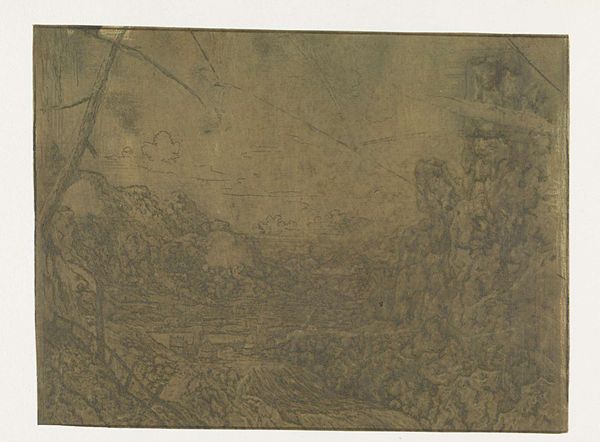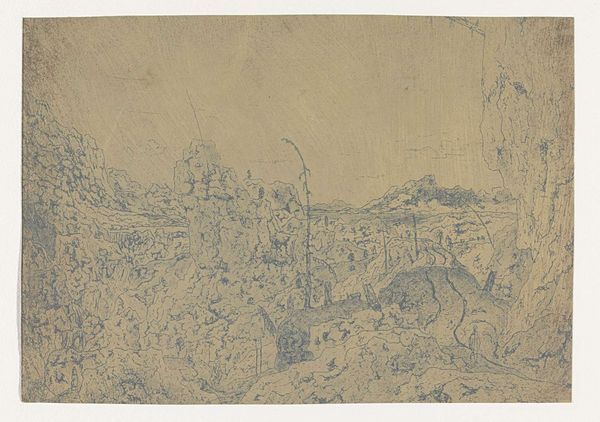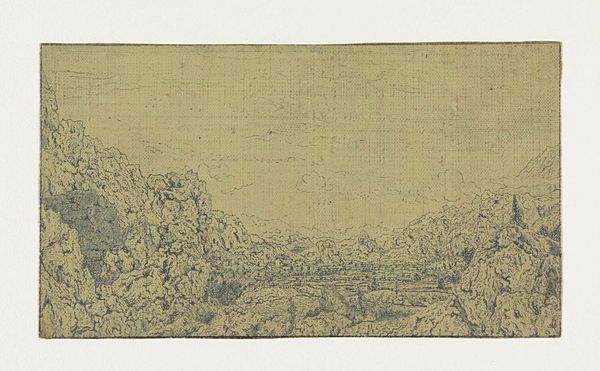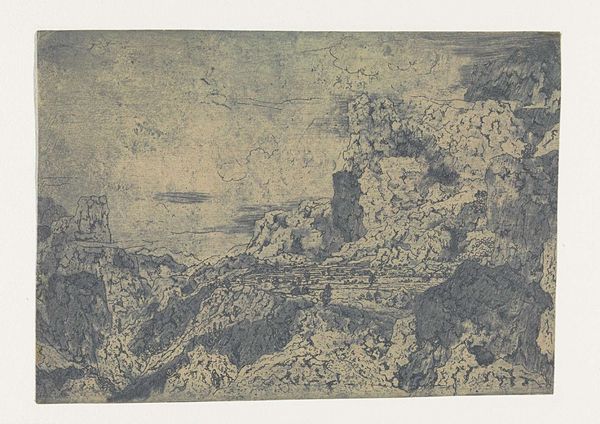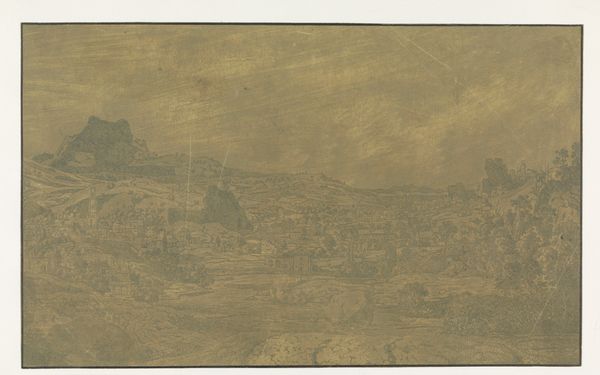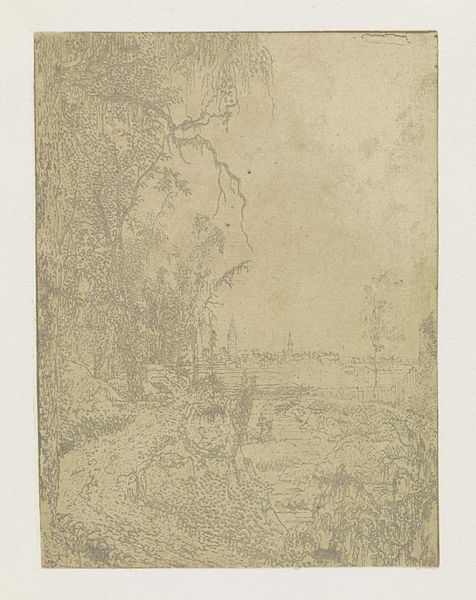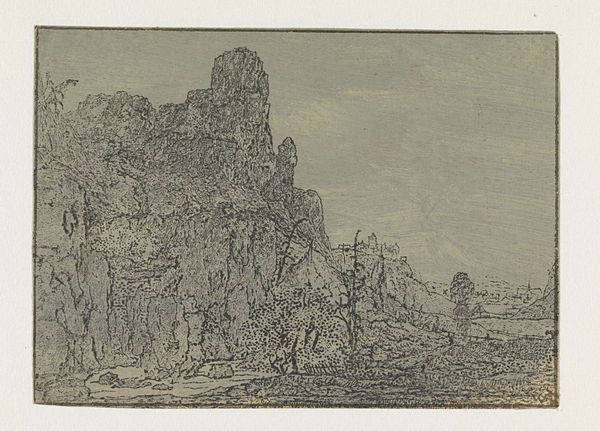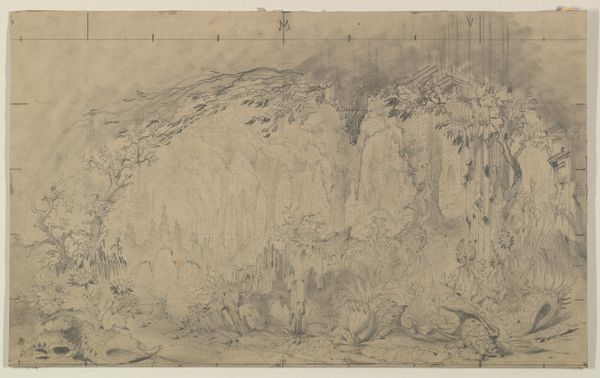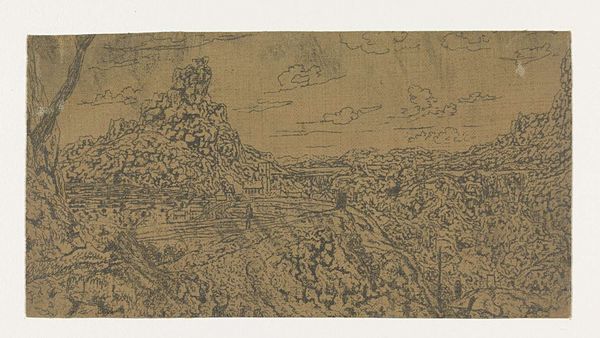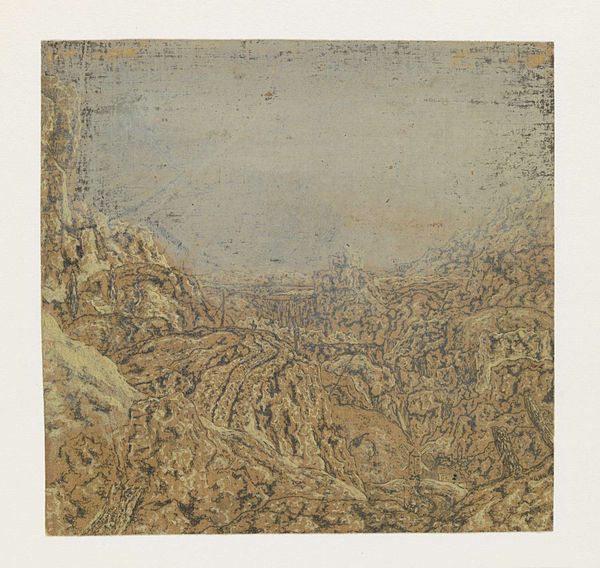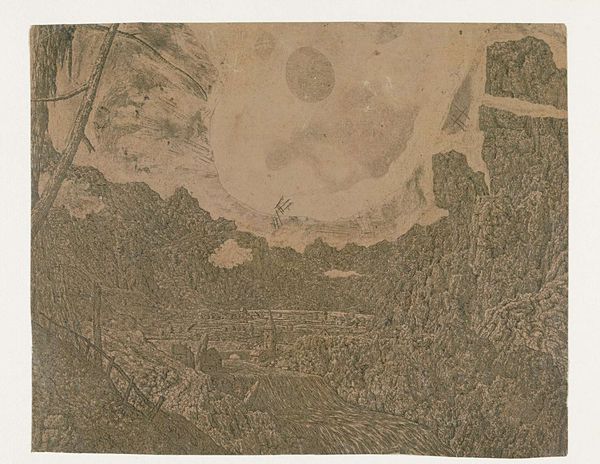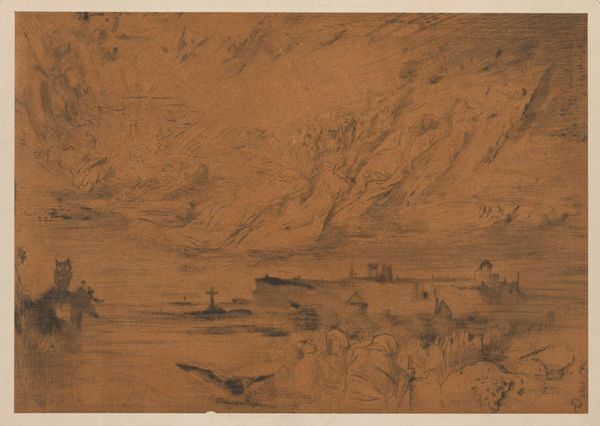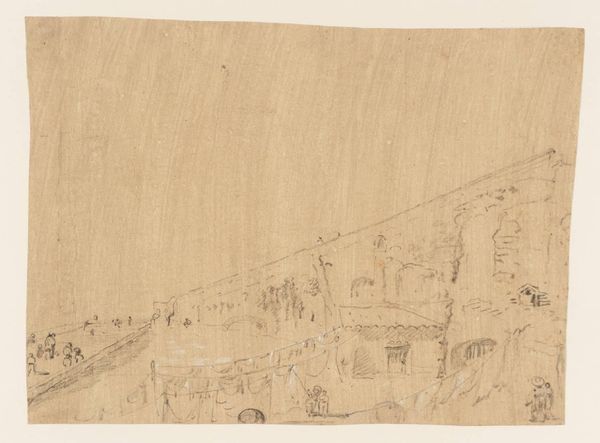
Rocky Landscape with a Man Walking to the Right, First Version c. 1625 - 1630
herculessegers
Rijksmuseum
drawing, print, etching, intaglio, paper
drawing
etching
intaglio
landscape
mannerism
paper
line
realism
Dimensions: height 161 mm, width 217 mm
Copyright: Rijks Museum: Open Domain
Editor: We are looking at Hercules Segers' "Rocky Landscape with a Man Walking to the Right, First Version", an etching done around 1625-1630. It's currently housed in the Rijksmuseum. The limited color palette creates a really desolate, almost apocalyptic feeling. What's your take on it? Curator: What strikes me is Segers' experimental approach to printmaking, treating etching as less of a reproductive medium and more as an arena for painterly exploration. He wasn't just replicating an image; he was actively manipulating the materials, inks, and even the paper itself. Editor: How so? I'm used to thinking of prints as multiples. Curator: Exactly! But Segers often printed his etchings in unique color variations, hand-coloring some, using different papers, and sometimes even selectively wiping ink from the plate. This undermines the traditional function of printmaking, which is the mass production of identical images. Instead, he seems more concerned with the directness and the hands-on manipulation. Do you notice how the lines are not uniform? It suggests he was trying to build texture rather than create clean copies. Editor: It does look really tactile. It almost feels like you could reach out and touch the rocks. It also brings into question this concept of "high art" versus "craft," considering his almost "DIY" methods. Curator: Precisely. And in that era, these choices held considerable implications about artistic labour and value. Etching and intaglio techniques were viewed differently than painting, especially in the marketplace. He really challenged this status. Editor: That really changes my perspective. I was focused on the landscape itself, but you've pointed out the actual physical making of the work as the most crucial element. Thanks for that! Curator: My pleasure! Seeing art as a product of labor and materials allows us to engage more deeply with its historical and cultural significance.
Comments
Segers applied greenish brown paint with swift strokes of the brush. Presumably this was the first layer of colour, and he would subsequently paint the sky and other passages, like he did in the adjacent impression (RP-P-OB-822).
Join the conversation
Join millions of artists and users on Artera today and experience the ultimate creative platform.
